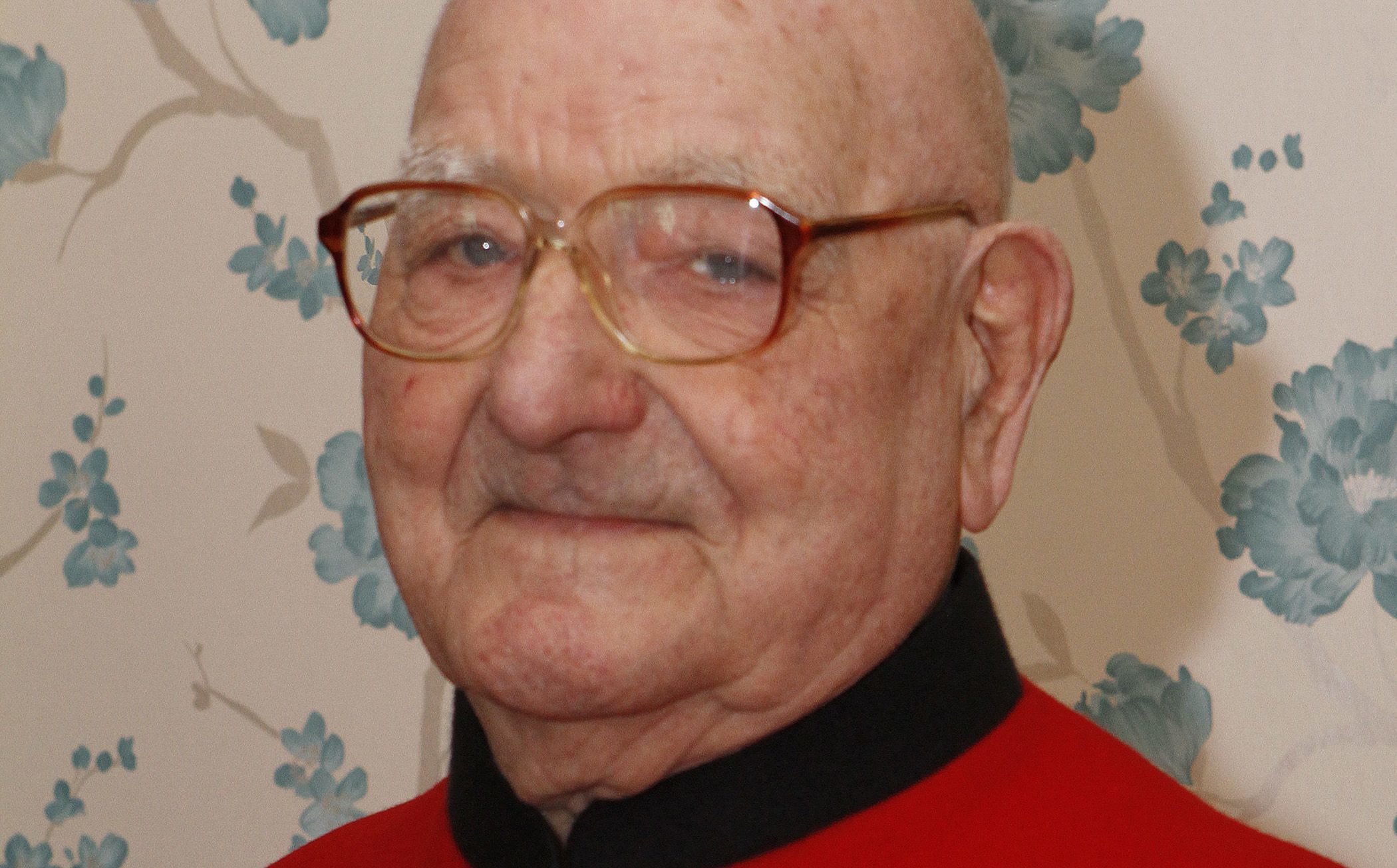
A Second World War veteran who was evacuated from Dunkirk and survived daring bombing raids against the Nazis has died, the head of the Royal Air Force has said.
Sergeant Peter Carrie, who was born in Dundee in 1915, served in the Army and then the RAF as a flight engineer on Lancaster Bombers.
Air Chief Marshal Sir Stephen Hillier, the Chief of the Air Staff, tweeted on Friday to say he was “sad” to learn that Chelsea Pensioner Sgt Carrie had died at the age of 102.
Posting an image of himself with the veteran, he wrote he was “proud” to re-present him with his flight engineer brevet in 2014 – 70 years after he was first awarded it.
At the time Air Chf Mshl Hillier described Sgt Carrie as “extraordinary”.
“The valour, the courage and commitment men like Sgt Carrie showed during WWII was just exceptional, in Bomber Command, in the mission that they did, and sustained throughout that war,” he said.
Decades after the end of the Second World War, Sgt Carrie finally added a flight engineer brevet, or badge, to his distinctive scarlet uniform.
He received his Bomber Command Clasp after it came to light he was ‘improperly dressed’ without his flight engineer brevet, which he was eligible to wear on his uniform along with his medals.
Sgt Carrie served with 75 (New Zealand) Squadron, surviving bombing missions against Nazi Germany including those on Hamburg and Wesel.
The squadron flew more missions than any other Allied heavy bomber squadron and suffered the second highest casualties of the Allied squadrons.
The RAF Bomber Command campaign in which Sgt Carrie fought saw the loss of more than 55,000 aircrew out of 125,000 – a death toll of nearly 45%.
Once asked why he was in a New Zealand Squadron, he said: “The Kiwis came over but were short of men on some squadrons so I joined them.”
He added: “They used to have drink sent over from home, and after every mission we’d have a wee shot.”
Sgt Carrie’s RAF service came after he had already served in the Army, which he had joined in 1934 at the age of 19.
He was posted to the Khyber Pass on the North West Frontier where before the Second World War he saw active service and was wounded.
Sgt Carrie later saw active service in France at the beginning of the war before being badly wounded and evacuated from Dunkirk in 1940.
His injuries prevented him from continuing his service with the Army but he joined the RAF’s Bomber Command in 1943 and served until he was demobbed in 1946.

Enjoy the convenience of having The Sunday Post delivered as a digital ePaper straight to your smartphone, tablet or computer.
Subscribe for only £5.49 a month and enjoy all the benefits of the printed paper as a digital replica.
Subscribe